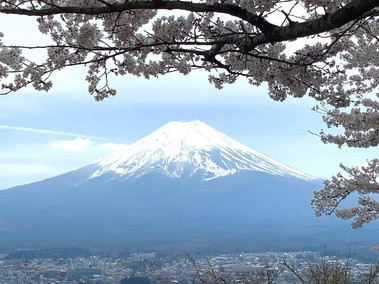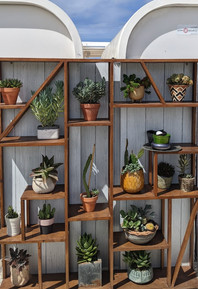Exercise 1: Places I’ll Remember
- martine75
- May 29, 2023
- 7 min read
Updated: May 31, 2023
“When to the sessions of sweet silent thought I summon up remembrance of things past,”
William Shakespeare, From Sonnet 30 (c. 1595-1600).
Find a personal photograph of a place you remember (a place where something significant might have taken place). You could even be in the photograph.
Now comes the interesting, reflective bit. Memory filters imagery, sometimes to its most affecting state. To remember is therefore to obscure things, to edit and highlight, but also to suppress that which we do not, perhaps, wish to recall. Think about gaps, and the limits of your memory - what is it that you can’t recall?
Research the location or setting you have chosen, to find out various other things about the place - where it is, who lives there, how it is used, or how it has changed, the look of the architecture, or the arrangement of the streets, or the colours or contrasts through various seasons. You might choose to discuss the past (and place) with others present at the time, or else browse online or in books.
Drawing from the memories you have of your place to remember (however fragmentary they might be), and also from the knowledge gained from your recent investigations, consider how you might combine the remembered and the researched in order to fill in or work around the blanks - to extend the possibilities of personal memory, and also invent, enrich and extend in scope of the visual.
Work on a painting (or a small series of paintings), using a medium of your choosing, to combine the factual and the fictive. The work does not require the adoption of any particular method or style of painting. It is important that the painting not only touches upon your past, but also that it seeks to transcend your memories to reveal (or to point to) other importances. It would be useful to consider whether figures, shapes, colours, or spaces could be repeated for emphasis, or highlighted in another way. Think, in particular, of the position and arrangement of the painted elements. Your solutions do not need to be literal.
Places I’ll Remember
My head is full and bursting with many places. Where can I take you? Where would you like to go in the world?
Here are some images that could be used from my travels.
Japan
Mount. Fuji.
The Americas
Niagra Falls / Arizona Balloon Trip/ Christ the Redeemer Brazil
Portugal.
Sintra and Vila do Conde.
Work on a painting.
Sintra, Portugal.
1. Find a personal photograph of a place you remember (a place where something significant might have taken place). You could even be in the photograph.
Sintra was a surprise for me, a big surprise, because of its uniqueness. This hidden gem, full of beauty and a fusion of cultures, stood out in my mind.
2. Now comes the interesting, reflective bit. Memory filters imagery, sometimes to its most affecting state. To remember is, therefore, to obscure things, to edit and highlight, but also to suppress that which we do not, perhaps, wish to recall. Think about gaps and the limits of your memory - what is it you can’t recall?
I can recall mostly everything because, in 2022, I went on a 31-day road trip to France, Portugal, Spain and Andorra. Following the Summer sun and experiencing Europe's light, sights and sounds. I wanted to see some of the art I have researched first-hand, Bosch and Bourgeois and Monet. I wanted to travel because travelling is an experience that is normal for me. I wanted to get inspiration and chase the light of Europe's landscapes. I can recall the lack of English voices there. Changes in the political and economic situation mean that the U.K. is no longer a member of the EU. In June 2016, with 51.8%, we voted to leave the E.U. This affects the vast majority of the population.
For an E.U. road trip, we now must;
Stay in Europe for three months and a total of six in a calendar year.
Have three different International driving permits for the countries we are visiting.
We must get our passports physically stamped to prove our entry date.
Our passport validity must have more than six months until expiry.
We have to quarantine our pet (if we have one).
Our mobile phone contract and data need to be upgraded (more expensive).
We must have a U.K. sticker on our car, not G.B.
Have emission stickers to travel into cities if they apply to our vehicle.
Have a green card to prove you are insured to drive in the E.U.
No meat or dairy products can be imported into Europe.
Plants must be certified free of pests.
The list, although not exhaustive, is now full of considerations we did not have before Brexit.
What I can't recall about Sintra is the reason why I didn't know it was there. This was puzzling and troubling. The world is a wondrous playground; when you think it has little more to surprise you, it bites back with a gift like Sintra.
3. Research the location or setting you have chosen to find out various other things about the place - where it is, who lives there, how it is used, how it has changed, the look of the architecture, or the arrangement of the streets, or the colours or contrasts through various seasons. You might choose to discuss the past (and place) with others present at the time or browse online or in books.
Sintra's history dates back thousands of years, and the first human settlement date back to the Neolithic period. The town's strategic location on the western coast of Portugal made it desirable for many civilisations throughout history, including the Romans and the Moors. In the 12th century, Sintra was conquered by the Christians, who built a castle on top of the hill overlooking the town. From then on, Sintra became a favourite destination of Portuguese royalty and nobility, who built extravagant palaces and gardens throughout.
In the 19th century, Sintra's romantic allure and architectural treasures drew the attention of European artists and intellectuals, including Lord Byron and Hans Christian Andersen. The beautiful palaces, castles, and gardens seem to transport visitors to a fairy tale world. But there is more to Sintra than just its stunning architecture and natural beauty. In recent years, researchers have been digging into the town's rich history and uncovering fascinating stories and secrets that have been hidden for centuries. From ancient Roman ruins to the legends of the Knights Templar, Sintra is a treasure trove of history and intrigue.
31 days and 4051.1 total miles - Sintra.
The total miles travelled on this inspiring trip - is 4051.1 miles. I took a small notepad with me for the journey. I wasn't driving, which enabled me to note the sights and observations along the way. The book contains the jumbled text of the visual stimulants I saw and would use for inspiration when we returned home.
"Over the bridge to the drab grey motorway. Soon the traffic is more congested, and old town spires are gone and replaced with modern architecture. It's boring, and all the tarmac offers are dashed lines for two hours as we take the route to Sintra.
The mountains of the Sintra-Cascais Natural Park to the north of the city of Lisbon are a magical and enchanted land. The pagans named the Mountain of the Moon. They supposedly looked up to the mountain and saw its quartz shine in the moonlight. Due to the beauty of Sintra and its cooler climate, it became a favourite of Royalty and nobility, who started to build their palaces and summer residences here. The mountain's tree source is the Earth's four corners, sourced by the Royalty who lived there. Cork, American Cedars, Nordic pines, and bay trees nestled amongst the castles dominate the topography. Here, Bavarian, Italian and Portuguese influences merge. The plants thrive because the air is humid and full of dew in the mornings. Small windy roads weave upwards, and at their sides, Moorish tiled fountains welcome you to drink the spring water.
Sintra is a fairytale with a romantic lure. Its pastel pink and mint houses caress the eye. The red and gold palaces evoke love and wealth. Sintra is Venice without water."
Betty Lowry of the New York Times says,
"Of all the words spoken and sung about Sintra, poet George Gordon Noel Byron’s had the most lasting effect. When he put this flowering mountain town in “Childe Harold”, he put Sintra on the map. “Glorious Eden,” he called the city."
Materials
Used canvas (the same subject which I can improve, redact or enhance).
Acrylic paint, aerosol paints.
Stencils.
Gold foil.
Flocked green tape.
Red card.
Craft Knife (for cutting the canvas.
Large broad synthetic brushes.
Gesso.
Black fine liner.
4. Drawing from the memories you have of your place to remember (however fragmentary they might be) and also from the knowledge gained from your recent investigations, consider how you might combine the remembered and the researched in order to fill in or work around the blanks - to extend the possibilities of personal memory, and also invent, enrich and extend in the scope of the visual.
Using an old canvas
Sintra
Mixed media on canvas 60 x 40 cm

Process.
5. Work on a painting (or a small series of paintings), using your chosen medium to combine the factual and the fictive. The work does not require the adoption of any particular method or style of painting. It is important that the painting not only touches upon your past but also seeks to transcend your memories to reveal (or point to) other importances. It would be useful to consider whether figures, shapes, colours, or spaces could be repeated for emphasis or highlighted in another way. Think, in particular, of the position and arrangement of the painted elements. Your solutions do not need to be literal.
I used Gesso to redact the used canvas.
I used the words I had written in my notebook about my visit to Sintra to write on the canvas with a fine liner.
I used the influence of pattern and colour to inform the mark-making. From mosaics and tiles, I saw there.
The fusion of cultures is represented by the styles of patterns included.
The colours are all those seen in Sintra, teals, umbers, siennas, greens, reds, golds and yellows.
The large swirl of paint represents the winding roads up the mountain.
The three cuts in the painting signify the three palaces I saw whilst there. The undertone was that the wealthy looked down on the poor (which makes me sad). The green flocked material in the cut signifies the lush topography of Sintra. The red and golds were the love/wealth of the noble who built the largest palace for his wife (the red and gold one).
The unveiling of the truth about the fairytale of Sintra was that the poor weren't really allowed to go there. In the past, they just served the Royalty who holidayed there.
As I added sweeps of all the colours I had seen there, great swishes and licks of paint with a broad brush. And as I wound the brush up like the roads to the top of the mountain, a great arch of glorious paint, I was in that 'Glorious Eden' again.
Sintra
Mixed media on canvas 60 x 40 cm

I liked the painting, but I also enjoyed the crops, redaction and manipulation of the image.
Glorious Eden
Digital crops from a mixed media painting.
References.
Lowry, B. (1989) ‘Retracing Byron’s Steps in “Glorious Eden”’, Los Angeles Times, 26 February. Available at: https://www.latimes.com/archives/la-xpm-1989-02-26-tr-967-story.html (Accessed: 26 April 2023).







































































































Comments